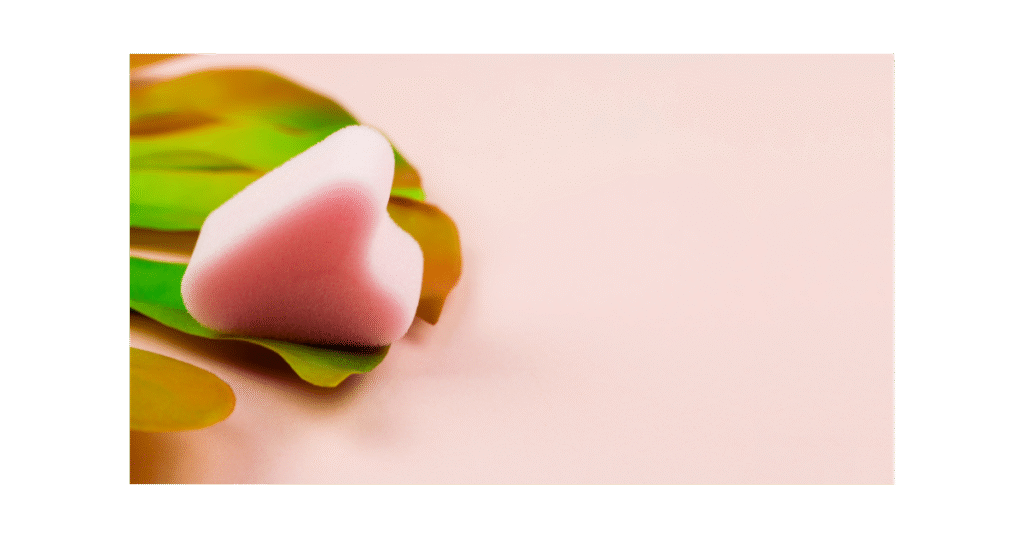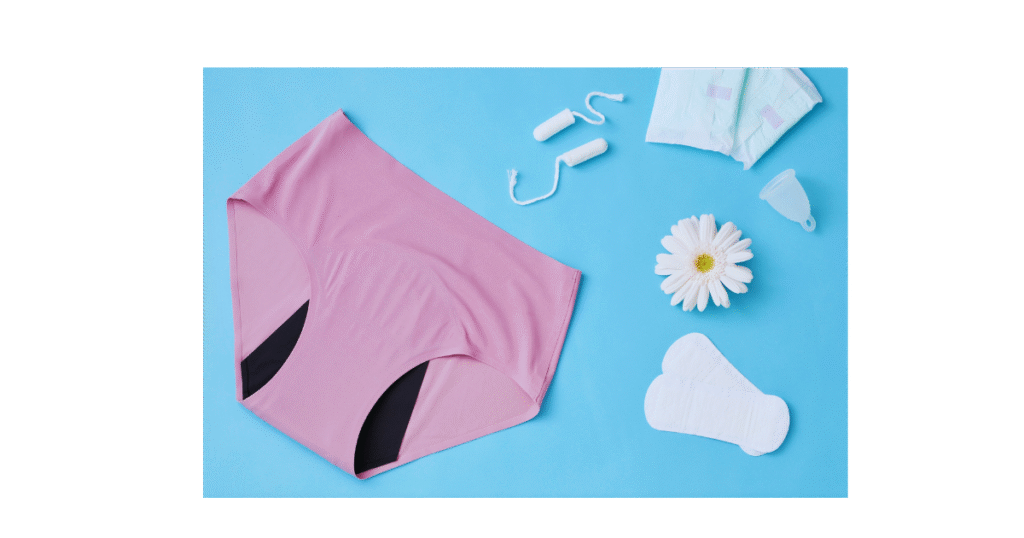Curious about menstrual sponges and if they are right for you? Menstrual sponges, whether natural or synthetic, offer a comfortable and eco-friendly alternative to traditional period products like tampons and pads. They adapt to your body’s shape and provide efficient absorption. This guide will help you understand menstrual sponges, their benefits, how to use them, and important safety tips.
Key Takeaways
Menstrual sponges, available in natural and synthetic varieties, provide a comfortable alternative for period care but are not widely advertised as such in the US.
Proper care and hygiene are essential for menstrual sponges to prevent infections and ensure longevity; cleaning should include soaking in vinegar or hydrogen peroxide solutions
Menstrual sponges are eco-friendly, biodegradable, and offer benefits like comfort during sexual activity, making them a sustainable choice compared to traditional disposable menstrual products.
Understanding Menstrual Sponges

Menstrual sponges are either natural sea sponges or synthetic sponges used for period care. Like tampons, they absorb menstrual fluid, but they are far less known compared to other menstrual products like cups or period underwear. This is partly due to the fact that in the US, retailers cannot advertise or sell these sponges specifically as menstrual products.
Despite their lesser-known status, menstrual sponges offer a unique blend of comfort and natural absorption. They are designed to fit comfortably inside the vagina and adapt to your body’s shape, providing a seamless and comfortable period experience.
Types of Menstrual Sponges

Menstrual sponges come in two main varieties: natural and synthetic. Natural sea sponges, often referred to as sea pearls, are harvested from the ocean and are known for their ability to regenerate and sustain themselves during harvesting. These sponges can vary in shape, size, color, and texture, each providing a unique experience.
Synthetic menstrual sponges, commonly referred to as soft tampons, are composed of polyurethane. They may also come pre-lubricated for added convenience. While natural sponges are favored for their renewability and eco-friendliness, synthetic options offer a different kind of ease and consistency in use.
How to Use a Menstrual Sponge
Using a menstrual sponge is straightforward once you get the hang of it. To insert the sponge, scrunch it up like a tampon without an applicator and moisten it to enhance comfort during insertion. This process is similar to inserting a tampon and can be done comfortably by many women.
The sponge fits comfortably inside the vagina, adapting to your body shape and providing reliable absorption throughout your period. Some women find that inserting the sponge before their menstruation begins can alleviate discomfort compared to traditional tampons.
When it comes to removal, gently grasp the base of the sponge or use a retrieval string if you’ve attached one. Be mindful that removal can be messy, so having paper towels handy or being in the shower can help facilitate a cleaner process to remove.
Caring for Your Menstrual Sponge

Proper care and maintenance of your menstrual sponge are crucial to ensure its longevity and hygiene. It’s essential to clean and sanitize the sponge before its first use to eliminate any contaminants. During your period, rinse and empty the sponge every 4-6 hours based on your flow.
For cleaning, wash the sponge with cold water and natural soap, and disinfect it by soaking it in a mixture of one tablespoon of vinegar or one teaspoon of hydrogen peroxide with a cup of warm water. After the sponge is washed and cleaned, rinse and hang it to dry in a clean area.
Remember, boiling the sponge is not advisable as it can damage the hard material and cause discomfort.
Safety Concerns with Menstrual Sponges
While menstrual sponges offer many benefits, it’s important to be aware of potential safety concerns. Here are some key points to consider:
One of the primary risks associated with their use is toxic shock syndrome (TSS).
There is a risk of infection due to their porous nature.
Although opinions among OB/GYNs may vary, some recommend against using menstrual sponges due to these safety issues.
Natural sea sponges can harbor sand, grit, and bacteria that pose health risks if not properly sanitized. Therefore, maintaining strict hygiene practices when using menstrual sponges is crucial to mitigate these risks.
Comparing Menstrual Sponges to Other Products
When comparing menstrual sponges to other menstrual products, many users find them more comfortable and less irritating than traditional tampons. Menstrual sea sponges are particularly praised for their absorbent nature and the fact that they do not cause the dryness that tampons often do.
Menstrual cups, another popular alternative, offer comfort without drying out the vaginal walls, similar to sea sponges. Additionally, using reusable menstrual sponges can lead to substantial savings over time, reducing the need for continuous purchases of disposable products.
Moreover, menstrual sponges can be worn during sexual activity, a feature that traditional tampons do not offer. Active individuals who engage in swimming or sports may also prefer sponges for their comfort and low visibility compared to other products.
Who Should Consider Using Menstrual Sponges?
Menstrual sponges can be an excellent choice for those with light to moderate menstrual flow, as their absorbency can vary and might not be sufficient for heavier periods. Factors such as convenience, comfort, and environmental impact significantly influence the decision to choose menstrual sponges over other products.
Ultimately, understanding your menstrual flow and personal preferences is crucial in determining if menstrual sponges are suitable for you. Comparing their absorbency to other products like cups and discs can also help in making an informed decision.
Choosing the Right Menstrual Sponge for You
Selecting the right menstrual sponge is key to ensuring comfort and effectiveness during your period. Consider the size that meets your flow needs, as well as the absorbency level and design of the sponge. Adjusting the size of the sponge can enhance its comfort and effectiveness, providing a proper fit.
The design of the menstrual sponge can also influence its intended comfort and efficacy, making it an important factor in your selection process. By choosing the right sponge, you can ensure a more comfortable and efficient period experience.
Eco-Friendly Benefits of Menstrual Sponges

Menstrual sponges are made from natural materials like sea sponge and various other materials, offering an eco-friendly alternative to disposable menstrual products. They are biodegradable, meaning they break down naturally over time, unlike their disposable counterparts.
Using menstrual sponges can significantly reduce your environmental footprint by minimizing the amount of disposable products that end up in landfills. Given that the production of disposable menstrual products is resource-intensive, opting for sponges can contribute to a more sustainable future.
Common Myths About Menstrual Sponges

There are several common myths about menstrual sponges that can lead to confusion. Contrary to popular belief, menstrual sponges are not associated with a heightened risk of vaginal infections if used correctly. Additionally, current scientific research does not provide evidence linking menstrual sponges to allergic reactions.
Menstrual sponges undergo hygienic processing to meet health standards before being inspected and reaching consumers, ensuring they are safe to use. Understanding these facts can help dispel misconceptions and provide a clearer perspective on menstrual sponges.
Real User Experiences
Women who use menstrual sponges often share their positive experiences, highlighting the comfort and natural feel they provide during their periods. Many users report a significant improvement in comfort and reduced dryness compared to traditional tampons.
Testimonials frequently reflect satisfaction with the transition from traditional products to menstrual sponges, with users feeling more empowered and in control of their menstrual health. The eco-friendly and sustainable nature of menstrual sponges also receives high praise from users, as many have sold their previous products in favor of these alternatives.
Overall, the review from real users personally underscores the benefits of menstrual sponges, making them a worthwhile consideration for anyone looking to enhance their menstrual experience.
Tips for First-Time Users
For those new to menstrual sponges, starting with clean hands and wetting the sponge beforehand can ease the insertion process. Positioning is critical; you might find it more comfortable to insert the sponge while sitting on the toilet or standing with one leg elevated, using your fingers for better control.
If you encounter any discomfort during insertion, adjusting or trimmed the sponge can provide a better fit. When putting the sponge in, ensure you are in a place that is easy to clean, as it can be a messy and wet process for a child. If necessary, you may cut the sponge for a better fit.
Removing the sponge every four to eight hours, similar to changing a tampon, is advisable.
Summary
In summary, menstrual sponges offer a comfortable, natural, and eco-friendly alternative to traditional menstrual products. They provide unique benefits such as reduced dryness, reusability, and the ability to be worn during sexual activity. However, it’s crucial to consider factors like menstrual flow and personal preferences when choosing the right menstrual product for you.
By understanding the types, usage, care, and safety considerations of menstrual sponges, you can make an informed decision about incorporating them into your menstrual care routine. Embrace the natural and sustainable benefits of menstrual sponges, and discover how they can enhance your period experience.
Frequently Asked Questions
Are menstrual sponges safe to use?
Menstrual sponges can be safe if cleaned and maintained properly, but there are concerns about risks like toxic shock syndrome and infections. It’s essential to weigh these risks and consult with a healthcare provider before use.
How often should I clean my menstrual sponge?
You should clean and rinse your menstrual sponge every 4-6 hours depending on your flow, and ensure it is sanitized before its first use. Regular maintenance is key for hygiene and effectiveness.
Can menstrual sponges be reused?
Menstrual sponges can indeed be reused for several months if they are properly maintained, providing a sustainable alternative to disposable products.
What are the eco-friendly benefits of using menstrual sponges?
Menstrual sponges offer eco-friendly benefits by being made from natural materials and being biodegradable, which significantly reduces the environmental impact associated with disposable menstrual products. This makes them a sustainable choice for menstruation.
Can I wear a menstrual sponge during sexual activity?
Yes, you can wear a menstrual sponge during sexual activity, making it a more versatile option than traditional tampons.





